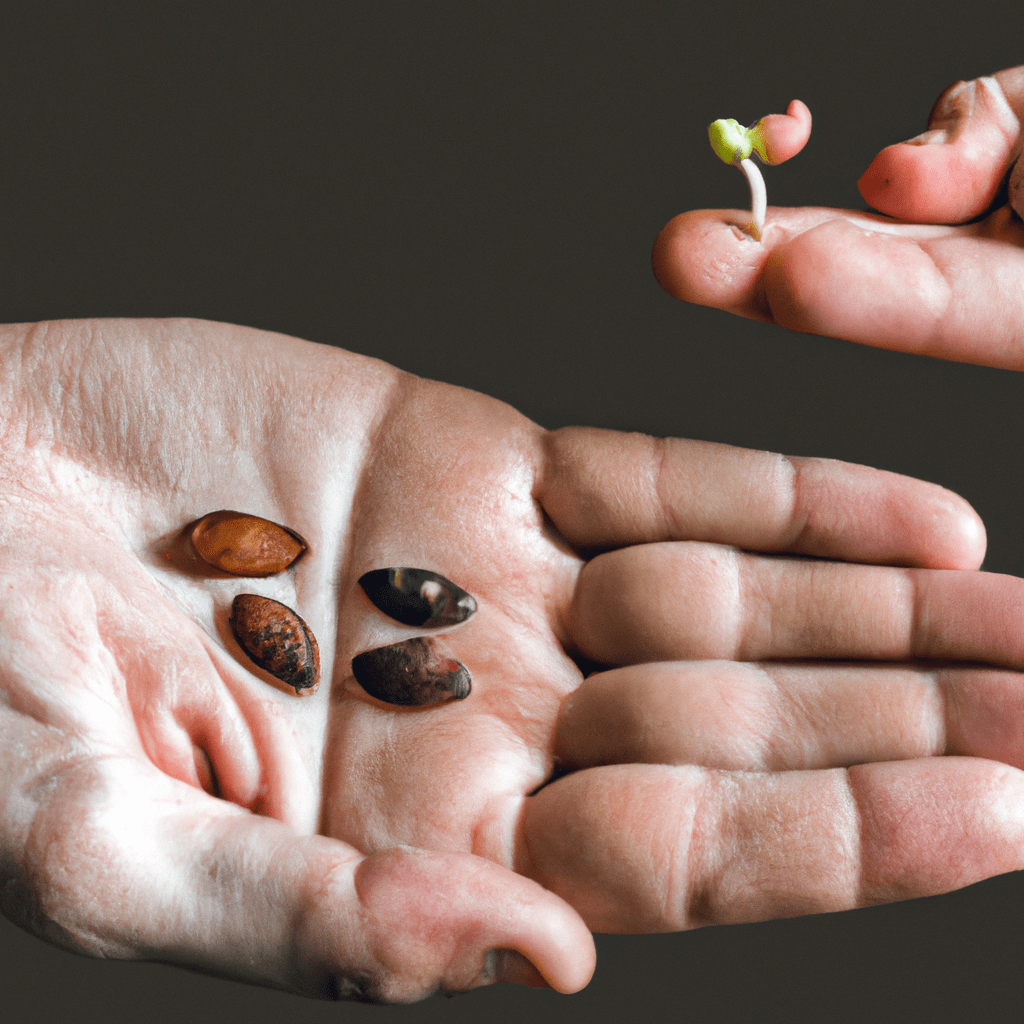
Welcome to our comprehensive guide on successful plant propagation. Whether you’re a seasoned gardener or just starting out, mastering the art of plant propagation can greatly enhance your gardening skills and provide you with an endless supply of beautiful plants. In this article, we will cover everything you need to know about seed propagation, cuttings, layering, grafting, and more. Let’s dig in!
Chapter 1: Seed Propagation
Understanding the Basics
Seed propagation is the process of growing plants from seeds. It involves selecting healthy and viable seeds, providing the right conditions for germination, and nurturing the seedlings until they are ready to be transplanted. When starting with seeds, it’s important to choose the right type for the specific plant species you’re interested in propagating.
Preparing Seeds for Germination
Before sowing the seeds, it’s essential to prepare them for germination. This can be done by scarifying the seeds (breaking or weakening their hard coat), stratifying them (exposing them to a period of cold temperatures), or soaking them in water to soften the seed coat. These treatments help to overcome dormancy and improve germination rates.
Sowing Seeds
Once the seeds are prepared, it’s time to sow them. The depth and spacing of sowing will vary depending on the plant species. Some seeds require light for germination and should be barely covered with soil, while others need to be buried deeper. It’s important to follow the specific instructions provided for each plant to ensure successful germination.
Providing Optimal Growing Conditions
To ensure successful seed germination and healthy seedling growth, it’s crucial to provide the optimal growing conditions. This includes maintaining the right temperature, humidity levels, and light exposure. Proper watering and adequate airflow are also essential for preventing diseases and promoting strong root development.
Chapter 2: Cutting Propagation
Understanding the Basics
Cutting propagation involves taking a portion of a plant, such as a stem or leaf, and encouraging it to develop roots and grow into a new plant. It is a popular method for propagating many types of plants, including herbs, shrubs, and houseplants.
Taking Cuttings
To propagate plants from cuttings, select a healthy and disease-free parent plant. Using clean and sharp pruning shears, cut a section of the plant just below a node (the point where leaves or buds emerge). Remove any lower leaves, leaving only a few at the top to reduce water loss.
Rooting the Cuttings
Once the cuttings are prepared, they need to be rooted. This can be done by placing them in a rooting hormone powder, which stimulates root growth, and then inserting them into a well-draining potting mix or a container filled with water. Provide the cuttings with the right amount of moisture and humidity to encourage root development.
Nurturing the New Plants
After the cuttings have developed roots, they can be transplanted into individual pots or directly into the garden. It’s important to continue providing them with the appropriate care, including regular watering, sunlight, and protection from extreme weather conditions. With time, the new plants will grow and flourish.
Chapter 3: Layering Propagation
Understanding the Basics
Layering is a propagation technique that involves encouraging a stem or branch of a plant to produce roots while still attached to the parent plant. This method is particularly useful for plants with flexible branches, such as some fruit trees, roses, and vines.
Types of Layering
There are several types of layering, including air layering, simple layering, and tip layering. Air layering involves making a cut in a stem, applying rooting hormone, and wrapping it with moist sphagnum moss or another rooting medium. Simple layering involves bending a low-growing branch to the ground and covering it with soil. Tip layering is similar to simple layering but involves burying the tip of a branch.
Encouraging Root Development
To encourage root development, it’s important to provide the layered stem or branch with the right conditions. This includes keeping the rooting medium or buried stem moist, providing indirect light, and protecting it from harsh weather conditions. With time, roots will form, and the layered section can be separated from the parent plant and transplanted.
Chapter 4: Grafting Propagation
Understanding the Basics
Grafting is a technique used to combine two different plant varieties into a single plant. It is commonly used for fruit trees, roses, and other woody plants. Grafting allows for the transfer of desirable traits, such as disease resistance or fruit quality, onto a strong rootstock.
Selecting Compatible Plants
To successfully graft plants, it’s crucial to select compatible plant varieties. The cambium layers of both the scion (the upper part of the plant to be grafted) and the rootstock (the lower part of the plant providing the root system) need to be aligned for successful graft union formation. Careful consideration of plant species and varieties is essential.
Grafting Techniques
There are various grafting techniques, including whip and tongue grafting, cleft grafting, and budding. Each technique involves making precise cuts in the plant material and joining the scion and rootstock together. It’s important to ensure a tight and secure connection to promote successful grafting.
Care and Maintenance
After grafting, it’s crucial to provide the newly grafted plant with proper care and maintenance. This includes protecting the graft union from extreme weather conditions, providing adequate moisture and nutrients, and monitoring for any signs of graft failure or disease. With time, the grafted plant will grow and thrive.
Conclusion
Congratulations! You’ve now mastered the art of successful plant propagation. Whether you choose to propagate plants from seeds, cuttings, layering, or grafting, each method offers its own unique benefits and challenges. By understanding the basics and following the proper techniques, you can enjoy the rewarding experience of growing your own plants and expanding your garden. Happy propagating!